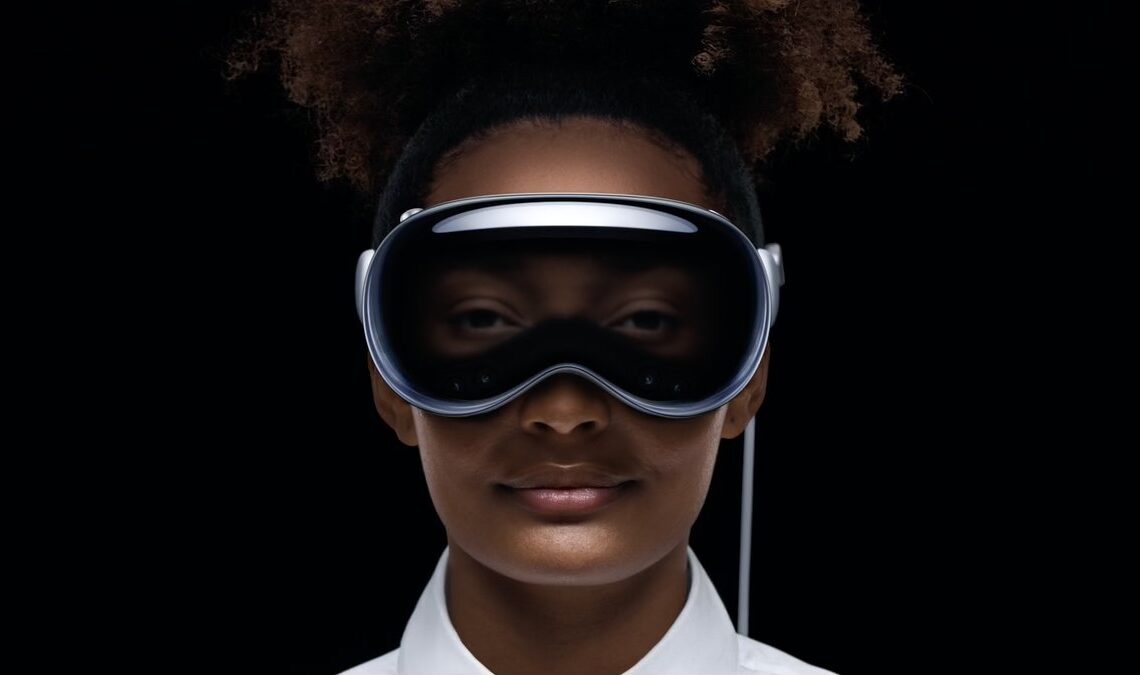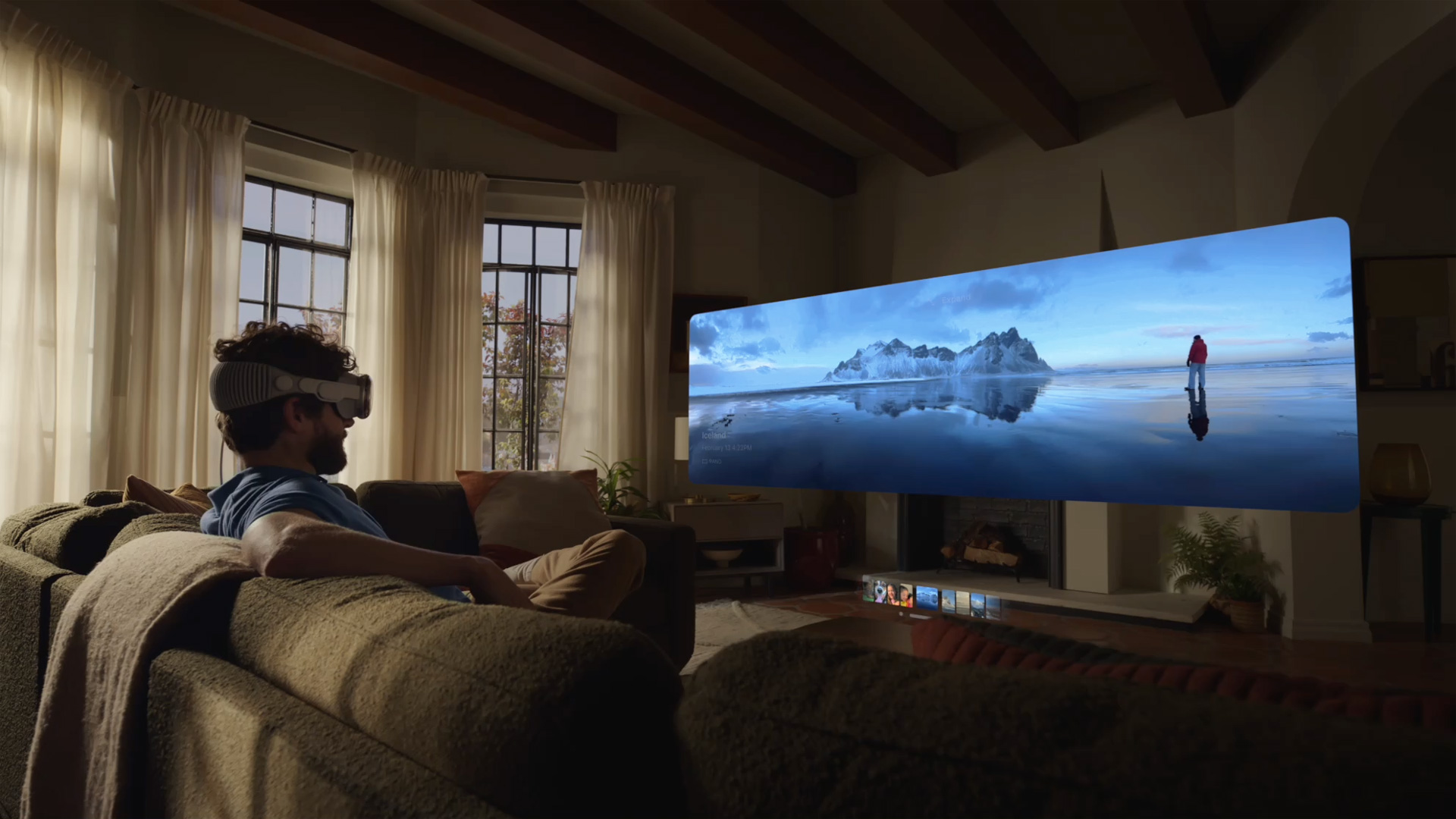
Apple has officially entered the race for your face. Or, more accurately, the race to strap a computer on your face. On the main stage of this year’s annual Worldwide Developers Conference (WWDC23), Tim Cook announced the Apple Vision Pro, a device he described as, “seamlessly blending the real world with the virtual world.” Cook also said that the device ships in 2024 and that, “it’s the first Apple device you look through and not at.”
Um, okay. What does this mean? Basically, Apple’s new VR headset—scratch that—AR headset is a pair of high-end ski goggles (embedded with cameras and sensors) that let you see virtual elements projected into your real-time space. The price tag on this baby? A cool $3,500. (Spit take…)
People are, as you can imagine, relentlessly mocking Apple’s first major product launch in more than eight years. The main gripes are its goofy look, hefty price, and overall dystopian vibes.
I can’t blame them. I can’t afford one. As some other journalists have pointed out, at $3,500, it costs the same as almost two months’ rent in the U.S., where the median rent was around $1,900 in March, according to Redfin.
The $3,500 question…What is the Vision Pro for?

The Apple of it all…
Traditionally, when Apple enters a tech space, it takes an already solid concept and makes it cooler, better, and easier to use. Their products work how our brains expect them to, and we love them so much we get addicted to them.
The biggest Apple-ism here with the Vision Pro headset is that it ditches the awkward-hard-to-figure-out-hand controllers. You control the headset with your “hands, eyes and voice,” and there are “passthrough” features that let you see and hear the outside world while strapped in. These features make the goggles much more intuitive, and now, you can say, make a sandwich while playing games, working, or 3D FaceTiming with your mom. (Oh great, more multitasking, just what we all wanted … eyeroll.)
Competitors tried to beat Apple to the punch (Panicking a little?)
Meta rallied the troops and went on the offensive last week. In advance of the Vision Pro announcement, Meta unveiled its Meta Quest 3 ($499.99) last Thursday. This version of the Quest is a little more sleek with a higher resolution display than the Meta Quest 2 and ships this fall. And on June 4th, the day Apple unveiled its Vision Pro, Meta dropped the price of the Meta Quest 2 down to $299.99. (Not that these are even in the same ballpark really. No one’s going to be like, ‘hey, I was going to snag that new Apple headset, but maybe I’ll just go with the $300 version because it’s $3,200 cheaper…)
So…What’s Next?
Is this the new iPhone — the one new piece of tech that will ultimately bring alternate realities to our eyeballs in a really cool way that the masses can no longer ignore? Is it the next big gadget unicorn, or to quote the Silicon Valley types, could it be the “major disruption” we’ve been waiting for?
No. Admittedly, there’s a new market here waiting to be tapped. Just 11% or so of people in America own an AR/VR headset, so were Apple to crack the consumer code here, they could make a pretty penny. But for now, the price point and lack of “solving a common problem for the masses,” isn’t there on this device. It’s very much debuting for the Silicon Valley crowd with the funds, and faces, to support it. I’m sure that’s Apple’s plan, but it still doesn’t help the collective “us.”
Let’s just hope it flop quite as spectacularly as the Apple Newton or the Apple eMate.
So here’s the last question, and let’s jump over to our socials to discuss: Do you think Apple’s all in on AR? And if so, does that mean the rest of us will be sooner rather than later too? Hit us up on Instagram to discuss: @JennJolly.
